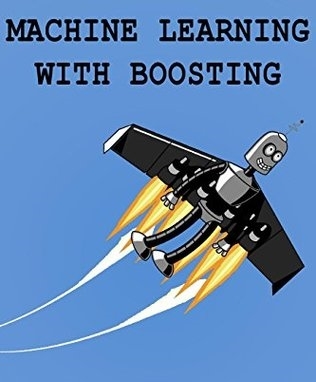This article was published as a part of the Data Science Blogathon.
Introduction
Boosting is a key topic in machine learning. Numerous analysts are perplexed by the meaning of this phrase. As a result, in this article, we are going to define and explain Machine Learning boosting. With the help of “boosting,” machine learning models are able to enhance the accuracy of their predictions. Let’s take a closer look at this approach:
What is Boosting in Machine Learning?
Before delving into the topic of ‘Machine Learning boosting,’ it is necessary to explore the term’s meaning. Boosting is defined as ‘encouraging or assisting something in improving.’ Machine learning augmentation does the same objective by empowering machine learning models and increasing their accuracy. As a result, it is a widely used algorithm in data science.
In machine learning, boosting refers to the methods that transform weak learning models into strong ones. Assume we need to categorize emails as ‘Spam’ or ‘Not Spam’. To make these differences, we can apply the following approach:
- If an email has only one picture file, it is spam (because the image is usually promotional)
- If the email begins with the line ‘You have won the lottery,’ it is spam.
- If an email has only a collection of links, it is spam.
- If the email originates from a source in our contact list, it is not spam.
Now, while we have categorization criteria in place, do you believe they are powerful enough on their own to determine if an email is a scam or not? That is not the case. On their own, these principles are insufficient to categorize an email as ‘Not Spam’ or ‘Spam.’ We’ll need to strengthen them, which we may achieve by adopting a weighted average or by taking into account the forecast of the higher vote.
Thus, in this situation, we have five classifiers, three of which classify the email as ‘Spam.’ As this class has a greater vote total than the ‘Not Spam’ category, we will consider an email to be ‘Spam’ by default.
This example was intended to demonstrate the concept of boosting techniques. They are more intricate than that.
How do they work?
As seen in the preceding example, boosting combines weak learners to generate rigorous rules. Therefore, how would you recognize these flaws in the rules? To discover an unknown rule, instance-based learning techniques must be used. Whenever a base learning method is used, a weak prediction rule is generated. You’ll repeat this procedure numerous times, and the boosting algorithm will merge the weak rules into a strong rule with each iteration.
Each iteration of the boosting algorithm finds the best possible distribution. It will begin by distributing the allocations equally across several categories. Observations will be given more weight if the first learning process makes a mistake. After allocating weight, we go on to the next step.
In this stage, we’ll continue the procedure till our algorithm’s accuracy improves. The output of the weak learners will then be combined to produce a strong one, which will strengthen our model and enable it to make more accurate predictions. A boosting algorithm focuses on the assumptions that result in excessive mistakes as a result of their insufficient regulations.
Different Kinds of Boosting Algorithms
Boosting algorithms may be implemented using a variety of different types of underlying engines, such as margin maximizers, decision stamps, and others. There are three primary types of Machine Learning augmentation algorithms:
- Adaptive Boosting (also known as AdaBoosta)
- Gradient Boosting
- XGBoost
The first two, AdaBoost and Gradient Boosting, will be discussed briefly in this article. XGBoost is a far more difficult subject, which we will address in a future article.
Adaptive Boosting
Consider a box with five pluses and five minutes. Your assignment is to categorize them and organize them into distinct tables.
In the first iteration, you weigh each data point equally and use a decision stump in the box. However, the line separates just two pluses from the group; the remaining pluses stay together. Your decision stump (which is a line that runs through our fictitious box) fails to accurately forecast all data points and has substituted three pluses for the minuses.
In the subsequent iteration, we give greater weight to the three pluses we overlooked earlier; but, this time, the decision stump only separates the group by two minutes. We’ll reweight the minuses that were overlooked in this iteration and restart the procedure. After a few repetitions, we can integrate several of these outcomes to generate a single rigorous prediction rule.
AdaBoost operates in the same manner. It begins by predicting using the original data and weighing each point equally. Then it gives bigger weight to observations that the first learner fails to accurately anticipate. It repeats this procedure until the model’s accuracy exceeds a predefined limit.
Adaboost supports decision stamps as well as other Machine Learning methods.
Here is an AdaBoost implementation in Python:
from sklearn.ensemble import AdaBoostClassifier
from sklearn.datasets import make_classification
X,Y = make_classification(n_samples=100, n_features=2, n_informative=2,
n_redundant=0, n_repeated=0, random_state=102)
clf = AdaBoostClassifier(n_estimators=4, random_state=0, algorithm=’SAMME’)
clf.fit(X, Y)
Gradient Boosting
Gradient Boosting uses the Gradient descent approach to minimize the operation’s loss function. Gradient descent is a first-order optimization process for locating a function’s local minimum (differentiable function). Gradient boosting trains several models consecutively and can be used to fit innovative models to provide a more accurate approximation of the response.
It creates new base learners that correspond with the negative gradient of the loss function and are connected to the whole system. Gradient Tree Boosting will be required in Python (also known as GBRT). It may be used to solve classification and regression difficulties.
Here is an implementation of Python Gradient Tree Boosting:
from sklearn.ensemble import GradientBoostingRegressor model = GradientBoostingRegressor(n_estimators=3,learning_rate=1) model.fit(X,Y) # for classification from sklearn.ensemble import GradientBoostingClassifier model = GradientBoostingClassifier() model.fit(X,Y)
Features of Boosting in Machine Learning
Boosting provides a number of advantages, but like any other algorithm, it has certain drawbacks:
- Since boosting is an ensemble model, it’s pretty natural to interpret its predictions.
- It also indirectly chooses features, which is another advantage of this technique.
- Boosting algorithms have higher predictive power than decision trees and bagging.
- Scaling it up is a little more challenging, as each estimator in boosting is predicated on the previous estimators.
Conclusion
I really hope you found this post about boosting to be informative. First, we spoke about what this algorithm is and how it may be used to address problems in Machine Learning. Its functioning and how it functions were then examined in greater detail.
We also spoke about the many kinds of it. We learned about AdaBoost and Gradient Boosting as a result of their examples, which we shared as well.
I’m glad you found it interesting. In order to contact me, you may do so using the following methods:





